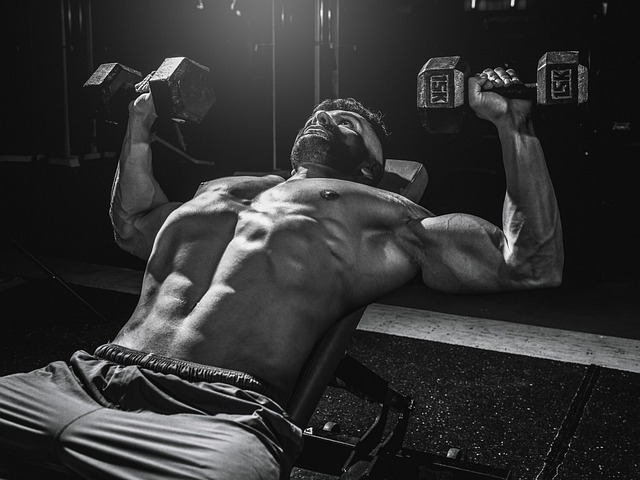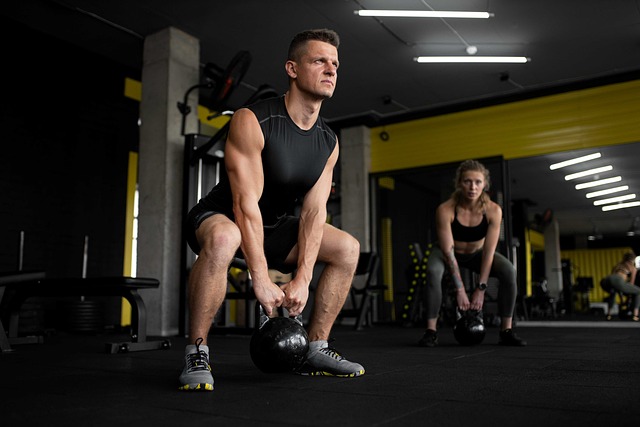Table of Contents
ToggleIntroduction
In the 4th segment of training splits, we are going to talk about everyone’s favorite split, or should I say every Gym Bro favorite split: The Bro split!
The “BRO Split” (short for “body part split”) is one of the most widely used and popular workout routines in the fitness community. It is a training routine that involves dedicating each workout to a specific muscle group, typically targeting one body part per session.
This split is commonly seen in bodybuilding circles, especially among those looking to build muscle mass and enhance definition. While it might have received some criticism over the years, the “BRO Split” continues to be a go-to choice for many fitness enthusiasts.
What Is the “BRO Split”?

The “BRO Split” is a workout routine in which an individual focuses on training one major muscle group per workout session. Typically, the split covers all the major muscle groups throughout the week. An example of a traditional BRO Split might look like this:
Day 1: Chest
Day 2: Back
Day 3: Shoulders
Day 4: Legs
Day 5: Arms (Biceps and Triceps)
Day 6: Rest or Optional Active Recovery
Day 7: Rest
Each of the workouts targets one major muscle group with the goal of providing it with maximum attention and volume, generally through a combination of compound and isolation exercises.
Why the “BRO Split” Works

The “BRO Split” works for several reasons, particularly for those focused on muscle hypertrophy (growth) and building strength. Here are some reasons why this split is effective:
Volume and Intensity: Focusing on one muscle group per day allows you to dedicate more time and effort to each muscle, resulting in greater training volume. With sufficient volume (total reps x sets), you provide the muscle with the stimulus needed to grow. This is especially important for bodybuilders who want to maximize muscle size.
Recovery: By isolating each muscle group, the BRO Split allows muscles to rest and recover between workouts. This can help prevent overtraining, which is crucial for muscle recovery and growth. For example, if you train chest on Monday, your chest will have several days of rest before being hit again.
Flexibility: The BRO Split is versatile and can be adjusted to fit the needs of different trainees. For example, beginners may work out three to four times per week, while advanced athletes might go for six days of training.
Focus on Weak Points: Since each muscle group has its own day, individuals can target their weaker areas more specifically. For instance, if someone has underdeveloped arms, they can add extra volume or exercises for biceps and triceps during their arm day.
Simplicity and Routine: The structure is easy to follow, making it a good fit for those who want a simple and predictable workout program. The consistency of the split means it’s easier to track progress and gradually increase weights or volume over time.
Who Is the “BRO Split” For?

The “BRO Split” is not a one-size-fits-all approach, and it works best for certain types of individuals:
Bodybuilders: The BRO Split is particularly effective for bodybuilders who want to focus on hypertrophy and muscle mass. Since it prioritizes one muscle group at a time, it allows for maximum volume and intensity, which is essential for growth.
Intermediate to Advanced Lifters: While beginners may benefit from full-body workouts or simpler splits, intermediate and advanced lifters often find the BRO Split ideal for their training. These individuals have more experience with lifting and can handle higher volumes and more frequent workouts.
People Focused on Aesthetics: If you’re training specifically for aesthetics, such as improving muscle definition, the BRO Split can be very effective. By targeting muscles individually, it allows for greater focus on each area of the body.
Individuals Seeking Strength: Although it’s not the primary goal of the BRO Split, many lifters also use this split for strength training. They can use their primary day for heavy compound lifts (e.g., bench press for chest day or squat for leg day) while incorporating accessory exercises for additional volume.
However, the BRO Split may not be the best choice for absolute beginners or those looking to improve overall athleticism or endurance. For these goals, full-body routines or full-body splits might offer better results.
Sample Workout Routines for the “BRO Split”

Here’s a sample 5-day workout routine based on the “BRO Split” structure. This split focuses on both compound lifts (which target multiple muscle groups) and isolation exercises (which target a specific muscle). Feel free to adjust sets, reps, and weights to your fitness level.
Day 1: Chest
Barbell Bench Press: 4 sets of 6–8 reps
Incline Dumbbell Press: 3 sets of 8–10 reps
Chest Dips: 3 sets of 8–10 reps
Cable Flyes: 3 sets of 12–15 reps
Push-ups: 2 sets to failure
Day 2: Back
Deadlift: 4 sets of 4–6 reps
Pull-Ups: 3 sets of 8–10 reps
Barbell Rows: 3 sets of 6–8 reps
Lat Pulldowns: 3 sets of 10–12 reps
Straight Arms Lat Pulldowns: 3 sets of 10–12 reps
Day 3: Shoulders
Overhead Barbell Press: 4 sets of 6–8 reps
Dumbbell Lateral Raises: 3 sets of 10–12 reps
Front Plate Raises: 3 sets of 12–15 reps
Bent-Over Rear Delt Raises: 3 sets of 12–15 reps
Face Pulls: 3 sets of 15 reps
Day 4: Legs
Squats: 4 sets of 6–8 reps
Romanian Deadlifts: 3 sets of 8–10 reps
Leg Extensions: 3 sets of 12–15 reps
Leg Curls: 3 sets of 12-15 reps
Calf Raises: 4 sets of 15–20 reps
Day 5: Arms
Barbell Bicep Curls: 3 sets of 8–10 reps
Hammer Curls: 3 sets of 10–12 reps
Close-Grip Bench Press: 4 sets of 6–8 reps
Tricep Dips: 3 sets of 8–10 reps
Cable Tricep Pushdowns: 3 sets of 12–15 reps
Days 6 and 7: Rest or Active Recovery
On these days, you can either take full rest or engage in active recovery, such as walking, stretching, or yoga.
Final Thoughts

While the BRO split has its merits as one of the most effective and most satisfying splits to follow, it does come with some limitations, especially for Natty lifters. The biggest limitation is limited training frequency where we are hitting each muscle once a week, which is not enough according to most studies that suggest a frequency of 2 or 3 times a week.
Another downside could be the time commitment since not everyone is able to dedicate time to hit the gym 5 days a week.
But overall, this would be a great split for advanced beginners, intermediate or even advanced lifters who want to keep they Gym journey fun and enjoyable while still progressing.
